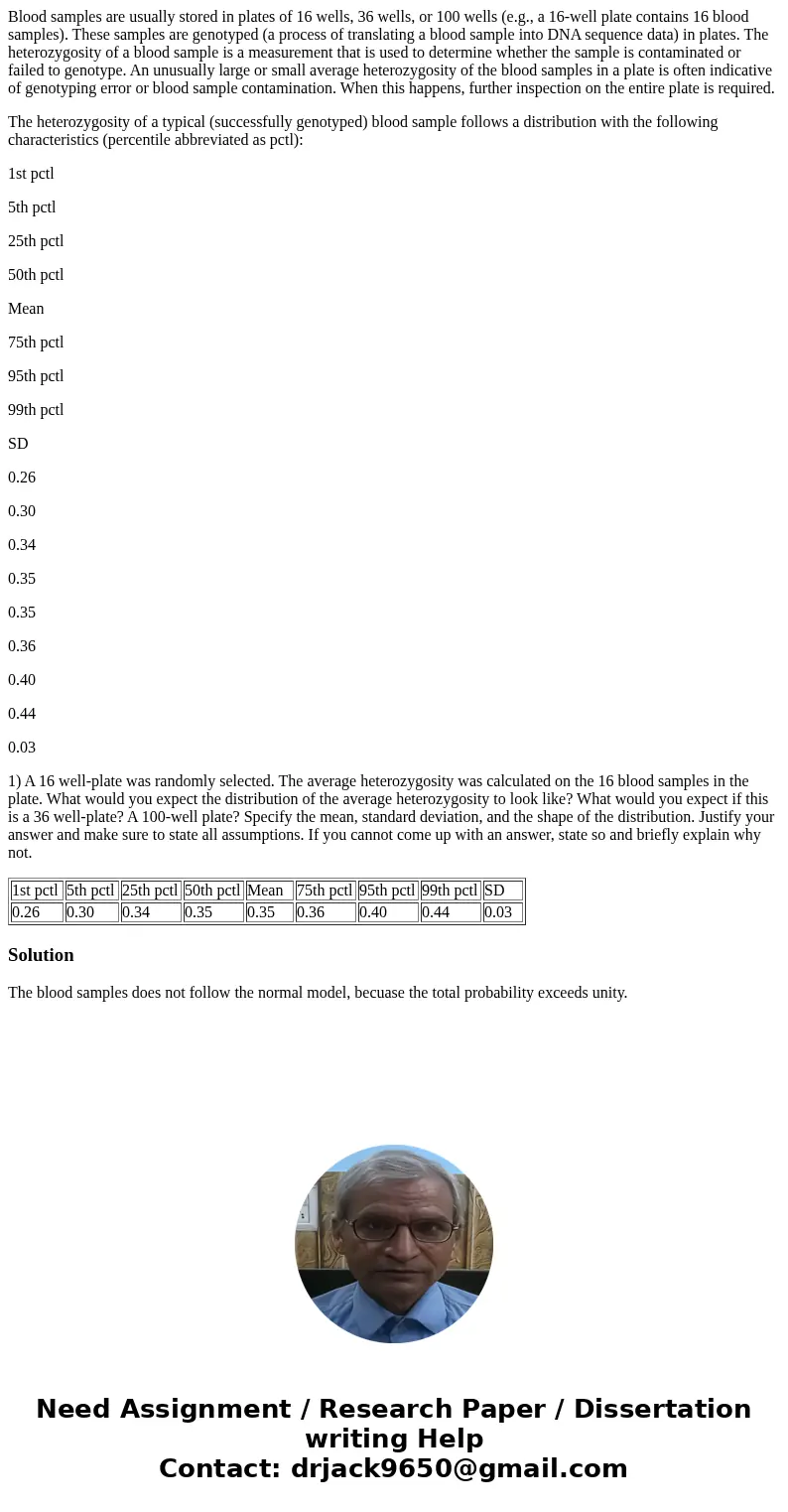Blood samples are usually stored in plates of 16 wells 36 we
Blood samples are usually stored in plates of 16 wells, 36 wells, or 100 wells (e.g., a 16-well plate contains 16 blood samples). These samples are genotyped (a process of translating a blood sample into DNA sequence data) in plates. The heterozygosity of a blood sample is a measurement that is used to determine whether the sample is contaminated or failed to genotype. An unusually large or small average heterozygosity of the blood samples in a plate is often indicative of genotyping error or blood sample contamination. When this happens, further inspection on the entire plate is required.
The heterozygosity of a typical (successfully genotyped) blood sample follows a distribution with the following characteristics (percentile abbreviated as pctl):
1st pctl
5th pctl
25th pctl
50th pctl
Mean
75th pctl
95th pctl
99th pctl
SD
0.26
0.30
0.34
0.35
0.35
0.36
0.40
0.44
0.03
1) A 16 well-plate was randomly selected. The average heterozygosity was calculated on the 16 blood samples in the plate. What would you expect the distribution of the average heterozygosity to look like? What would you expect if this is a 36 well-plate? A 100-well plate? Specify the mean, standard deviation, and the shape of the distribution. Justify your answer and make sure to state all assumptions. If you cannot come up with an answer, state so and briefly explain why not.
| 1st pctl | 5th pctl | 25th pctl | 50th pctl | Mean | 75th pctl | 95th pctl | 99th pctl | SD |
| 0.26 | 0.30 | 0.34 | 0.35 | 0.35 | 0.36 | 0.40 | 0.44 | 0.03 |
Solution
The blood samples does not follow the normal model, becuase the total probability exceeds unity.

 Homework Sourse
Homework Sourse